1. IIFYM.com interviews Flexible Dieting Contest Prep Coach and Diet Doc Clinician; Tyler Mayer.
IIFYM: For our readers that might not be familiar with you, can you please tell us a bit about yourself?
TNT: I’m Tyler, and I’m a nutrition consultant and strength coach for my company.
Team TNT. I’m also an IFPA pro bodybuilder, competitive powerlifter, and a Diet Doc licensed clinician.
IIFYM: How did you get started in natural bodybuilding?
TNT: I’ve always been an athlete at heart. I was a four-sport athlete (basketball, football, track, and baseball) in high school and eventually played college football. I only played for a year, because I decided to go into the medical field. I had always been active and still hit the gym a lot during my college years, but once I got out of college…I started losing my drive and motivation for working out.
TNT: I’ve always been an athlete at heart. I was a four-sport athlete (basketball, football, track, and baseball) in high school and eventually played college football. I only played for a year, because I decided to go into the medical field. I had always been active and still hit the gym a lot during my college years, but once I got out of college…I started losing my drive and motivation for working out.
I knew that I wanted to stay in shape to both maintain some athleticism and to look good, but doing the same thing day-in-and-day-out wasn’t getting me anywhere. I realized that if I wanted to take my athleticism and physique to the next level that I needed to set some goals and train like I never have before. That’s when bodybuilding sparked my interest.
In 2007, I dove in headfirst and competed in my first show bodybuilding show…and was hooked! What’s ironic, is that prior to stepping on stage, I actually had never even seen a show before! I kept competing and eventually, I earned my IFPA pro card in 2011, then made my pro debut in 2013.
IIFYM: What about powerlifting. I know that you have been perusing powerlifting the last few years. What is it about powerlifting that you prefer over bodybuilding?
TNT: I love powerlifting. It’s definitely a different world compared to bodybuilding but there are pros and cons to both sides. It’s individualistic, it’s measurable, in some ways it’s predictable and it’s rewarding on multiple levels. There’s nothing better than getting a PR that you’ve been working so hard to get for a period of time.
TNT: I love powerlifting. It’s definitely a different world compared to bodybuilding but there are pros and cons to both sides. It’s individualistic, it’s measurable, in some ways it’s predictable and it’s rewarding on multiple levels. There’s nothing better than getting a PR that you’ve been working so hard to get for a period of time.
Additionally, I love powerlifting because you can typically eat more food (assuming you’re not cutting for a weight class) and get stronger at the same time. You don’t have to be stage-lean while prepping for a meet, and because of that, when training for powerlifting, my energy is much higher and I feel a lot better. Don’t get me wrong, I still apply some bodybuilding lifts to my powerlifting programming so I’m not losing progress in that area of my life.

IIFYM: What are your numbers on the big 3? (squat, bench press & deadlift for those readers that don’t know about powerlifting)
TNT: My best powerlifting numbers are: 520lb squat in the gym, 380lb bench press at a meet, 600lb deadlift at a meet.
IIFYM: How about coaching?
What got you into helping others achieve their physique goals?
What got you into helping others achieve their physique goals?
TNT: This might sound cliché but I truly wanted to help people. In Arizona, there were a lot of bad contest prep “diets” floating around and I watched a lot of people get hurt pretty badly. I wanted to spread the word that competitors DON’T have to go to extreme measures to diet for a show and they can STILL come out looking their best ever while enjoying some pleasure foods. Back when the idea of “flexible dieting”/”IIFYM” was still fairly new, the majority of individuals I talked to about it didn’t believe me or the concept.
As a result, I got a lot of criticism for it. I fell in love with coaching pretty hard, particularly when athlete clients would tell me that flexible-dieting changed their lives because of the non-restrictive nature of the process, which aided in developing a better physique than they ever thought possible.
For me, it was never about winning a stack of pro cards, it was about changing lives for the better…about changing minds to become permanently healthier mentally, having bodies heal and develop healthier, and watching clients maintain balance in their lives and in their relationships.
I believe there’s no shame in admitting that even coaches need coaches…Despite being a prep coach for so many others, I HIGHLY recommend all competitors have a trustworthy and quality coach with integrity.
IIFYM: Do you manage your own contest prep diet or do you have a coach?
TNT: I believe there’s no shame in admitting that even coaches need coaches, and I definitely reach out to others when I am prepping for a show, or even for training programs. It’s not a matter of not knowing how to prep a competitor for a show or not knowing how to design a training program, but sometimes I just need to put control in hands I trust so I don’t overthink things.
I also really love the accountability, so when I’m prepping for a show, I have my coach Dr. Joe Klemczewski to guide me to the stage. He’s the one that introduced to me the concept of flexible-dieting a couple of years into my stage career, and he turned things around for me when my contest preps weren’t going well, and I’ve never looked back since. I could diet myself down, without a doubt, but it can become a real psychological battle that’s just exhausting.
I would rather have someone that I trust tell me what to do and take the guess-work out of it for me. I’m sure a lot of people reading this who have prepped themselves can relate to the struggle, and likewise, others can relate to the experience of having a knowledgeable coach by your side and its stress-relieving effects on a prep experience. Despite being a prep coach for so many others, I HIGHLY recommend all competitors have a trustworthy and quality coach with integrity.
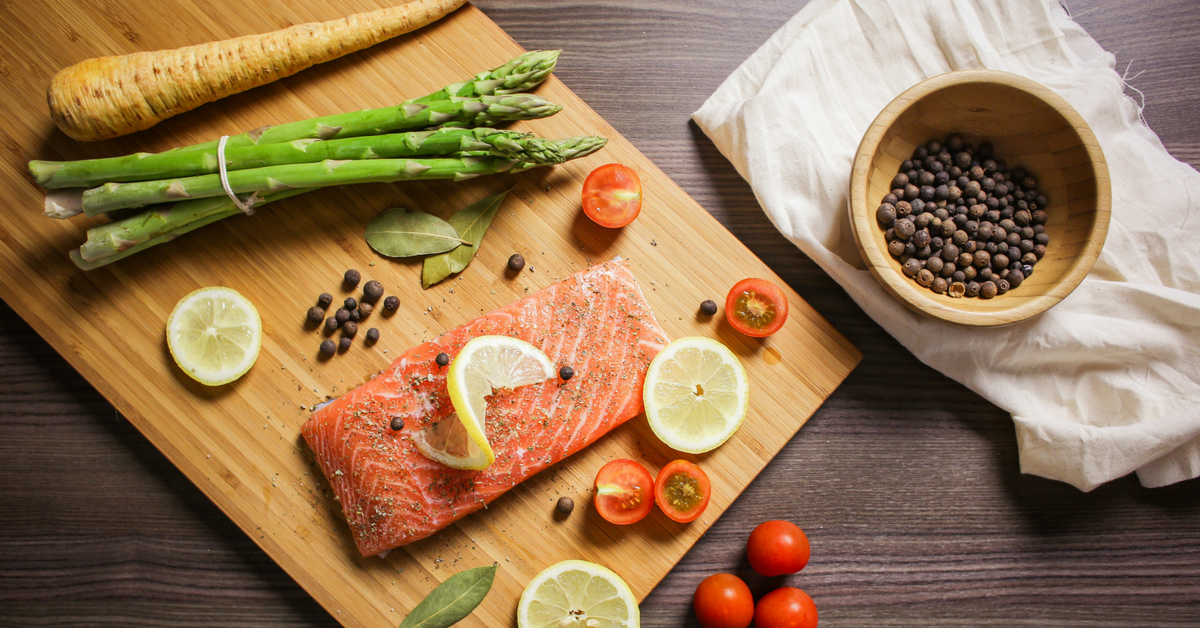
IIFYM: What role does IIFYM play into your offseason and contest prep diet? Do you keep it clean most of the time or do you allow yourself to indulge?
TNT: I love the IIFYM approach in the off-season! It allows me to experiment with more varieties of foods and also enjoy the seasons of food: holidays, seasonal flavors and fun limited edition goodies.
I typically eat fairly “clean” 70-80% in the off-season (so I’m getting enough micronutrients through whole veggies and meats), but I do enjoy my fun food equally. I’m a huge lover and indulger of ice cream, and I usually work in (usually) daily. I love flexible dieting!
IIFYM: What about your clients? Do you encourage them to keep it clean most of the time or do you see a benefit in allowing some “cheat” type foods in to help?
TNT: I’m a big advocate of eating more whole foods that are nutrient-dense first before deferring automatically to “cheat-type” foods. Those who are dieting-down for competitions or significant fat-loss gravitate towards cleaner and more whole-food-based choices, and as a result, many experience an overall sense of satiety, energy, and fullness.
I do advocate for variety throughout the day and week because balance is healthy and it’s key for a well-rounded diet, but for sanity and saving social graces, I realize and encourage that partaking in pleasure food is important too. The qualifier to that belief, though, is in implementing careful strategy and not falling into “loose-tracking”—that’s the pitfall and often the gateway for over-indulging in craving-based treats that for some can lead to excessive over-indulging and into all-out binging sessions.
It’s been my experience that one has to have a pretty strong mindset, approach and strategy for curbing cravings or lightly indulging within control, and I think every individual can achieve that. But, I am a believer of integrating small portions of pleasure foods to build a more controlling and healthy relationship with trigger foods than all-out restriction. Restriction is a powerful thing, and time and time again it’s proven that saying “NO” causes a tremendous (and sometimes unavoidable) inability to have the off-limits item.
Lastly, I believe the IIFYM concept is often mis-contextualized and misunderstood. A lot of flexible-dieters attempt to make a point to non-flex-dieters that one can make progress while eating designated “bad foods”, and that’s what others come to believe: that the whole IIFYM approach consists of the junk food they’ve been presented in those advocating arguments…and that’s inaccurate.
Having a diet consisting of macro-dense, low-volume pleasure foods can set new flex-dieters up for failure and over-indulging, so I recommend new flex-dieters to really research and seek out a coach that will demonstrate and provide the resources to implement this successfully from square 1.

IIFYM: What are your thoughts on refeeds vs. cheat meals?
TNT: I like the idea and term “refeeds” more than “cheat meals”. Refeeds are more controlled, can be explained as purposeful for athletes, whereas “cheat meals” have a negative connotation hovering around “NO-NO foods”, are uninformative about their scientific purpose on the body, and can lead to total destruction.
During the off-season, or for some clients transitioning into a maintenance phase, I also implement “relaxed meals” occasionally that are strategically untracked, SINGULAR meals—typically used in conjunction with family and social events.
There’s a degree of criteria that’s outlined as it’s part of the process of working with my client to build a strong mindset around this untracked eating experience, but it’s also about pushing for growth and release of responsibility, mindfulness, and the power of their learned knowledge to enjoy the meal stress-free but mindfully and balanced, too. Immediately after, we’re right back to tracking so there’s no hope for spinning out of control.
I won’t designate an amount of protein that makes my clients feel like they’re stuffing themselves. That can leadn to discouragement and defeat in my experience.
IIFYM: Let’s talk macros for a minute.
What are your thoughts on protein consumption? Many people subscribe to 1 gram per lb of body weight, while guys like Dr. Joe go closer to .75 grams per lbs of lean mass, as he talked about in this awesome interview. IIFYM interview with Dr. Joe Klemczewski. What is your take on setting protein for your clients?
What are your thoughts on protein consumption? Many people subscribe to 1 gram per lb of body weight, while guys like Dr. Joe go closer to .75 grams per lbs of lean mass, as he talked about in this awesome interview. IIFYM interview with Dr. Joe Klemczewski. What is your take on setting protein for your clients?
TNT: Honestly, I don’t really have a specific protocol that I give clients when it comes to protein amounts. I like to evaluate their history and overall goals before determining an amount.
Every EVALUATION is different: sometimes competitors have higher amounts compared to someone just looking for fat-loss, or if someone is used to a higher protein intake by preference, I consider that, likewise if someone explains they’ve always had a hard time getting in adequate amounts of protein, I won’t designate an amount that makes them feel like they’re stuffing themselves with protein: that leads to discouragement and defeat in my experience.
Additionally, sometimes medical conditions and circumstances play an important role in those designations—that’s all informed, educated knowledge that I bring to my efforts when calculating.
IIFYM: What about carbs?
Being one of your clients, and because I know many of the people you work with, and though I have to say that I don’t know of many coaches that have a client list that is as shredded as yours is. You seem to have loads of clients that are not only getting diced with IIFYM, but also eat tons of carbs while doing it. Do you think this has more to do with the individuals or your own contest prep system?
Being one of your clients, and because I know many of the people you work with, and though I have to say that I don’t know of many coaches that have a client list that is as shredded as yours is. You seem to have loads of clients that are not only getting diced with IIFYM, but also eat tons of carbs while doing it. Do you think this has more to do with the individuals or your own contest prep system?
TNT: There are a lot of variables for how one intakes, adjusts to, and maintains their general carbohydrate intake. In my experience, a lot of individuals can’t handle a large quantity, some don’t need to, so it’s important to handle that intake carefully. Not all of my clients have a large carb intake, but many start their diets with a higher intake and as they approach and achieve their goal, they are at a relatively low intake.
Others, however, start low and over time are able to progress it upwards. Many initial clients who come to me with existing low-intakes and express a desire to prep for a show, are often turned down and we go through a process of reevaluating wants/desires/dreams versus the absolute need for HEALTH. With that in mind, I’ve had tens and tens of competitors and athletes hold tight to their goals, but defer their competition date in order to rebuild metabolically with a progressive experience of adding in calories while maintaining leanness and conditioning.
This approach allows for them to come in with more preserved muscle-mass, general leanness and conditioning while maintaining a healthier-functioning body, and 100% of the time they place better because of these variables. In my experience of coaching people over the years, those that work with me the longest and do many shows together, typically end up eating a lot more carbs coming into shows.

IIFYM: Let’s talk about reverse dieting and metabolism damage. There are many contest prep coaches that swear by it and many naysayers that hate the concept. What are your thoughts on reverse dieting?
TNT: I’m a fan of reverse-dieting but it really depends on the person too. There are some people that just need to increase food at a slower rate simply because of the psychology aspect of it. Some have a huge panic attack if you tell them to eat at maintenance levels. For someone like that, I’ll give them smaller, gradual increases to prevent rapid weight gain and to let their body adjust to the intake before increasing again.
Other clients can handle more aggressive jumps; I’ll have them go into maintenance much quicker to jump-start their off-season more quickly.
When dieting-down, I believe metabolic adaptation is 100% real.
When dieting-down, I believe metabolic adaptation is 100% real.
As one diets down and loses weight, studies have proven the metabolic rate will slow down because of lesser overall mass on the body—because of this decrease in mass, the metabolism naturally doesn’t NEED as much energy to maintain homeostasis…so it adapts. But this adaptation doesn’t last forever, either, it can increase again.
I know research is being done on this topic, specifically, without definitive answers (yet) so I can only speak anecdotally about my experience with clients.
Though I have to admit, initially I WAS skeptical of metabolic “damage” or “adaptation” concept until I worked closely, in person, with a client who was a seasoned bikini competitor. Prior to that when I had had potential clients approach me 1) eating very little and 2) claiming to be unable to lose weight, I’d assume that they were binging or not being truthful.
Though I have to admit, initially I WAS skeptical of metabolic “damage” or “adaptation” concept until I worked closely, in person, with a client who was a seasoned bikini competitor. Prior to that when I had had potential clients approach me 1) eating very little and 2) claiming to be unable to lose weight, I’d assume that they were binging or not being truthful.
Before I started working with this experienced bikini competitor, closely, she was eating about 700 calories a day and doing 2-3 hours of cardio a day…she had been doing this for TWO YEARS! (I don’t know how she survived that long!) Because we were working closely in proximity together, I knew she wasn’t binging. Progressively over a 2 year period of time, she did gain about 25 pounds during her reverse.
Now, 3 years later, she’s lost all of that weight-gain, has added muscle mass, and is now eating almost triple her 700-calorie intake. Throughout the reverse process, she rarely had decreases in food and had minimal (almost no) cardio.
IIFYM: Tell us about your approach to cardio. Hiit, LISS or both? How often?
TNT: I like to have my clients do as little cardio as possible while eating the highest macro-intake they possibly can while consistently making progress. I prefer HIIT over LISS cardio but I have them do both, for purposeful reasons.
There are trends that have been true to inform a lot of my process with clients, like, if a competitor trains legs often throughout the week, typically they’re getting beat down pretty badly and adding in large sessions of moderate of LISS leg-based cardio can compound issues for recovery. By adding HIIT, many competitors can take more of a beating on the legs since the HITT session can be close to a leg workout by itself.
I’m also a fan of bringing in LISS to help with recovery–how much depends on the person and the goal. Typically, I have some of my competitors doing more as they get closer to a show, but it’s a process of working the sessions up in quantity over the entire prep process than starting a prep with a ton. I like to keep LISS sessions no longer than about 40 minutes at a time, and I’ll have advanced competitors do as many as 15 intervals in a HIIT session.
Again though, it depends on the competitor, the goals, the timeline, and for most competitors: each prep is different!
Again though, it depends on the competitor, the goals, the timeline, and for most competitors: each prep is different!
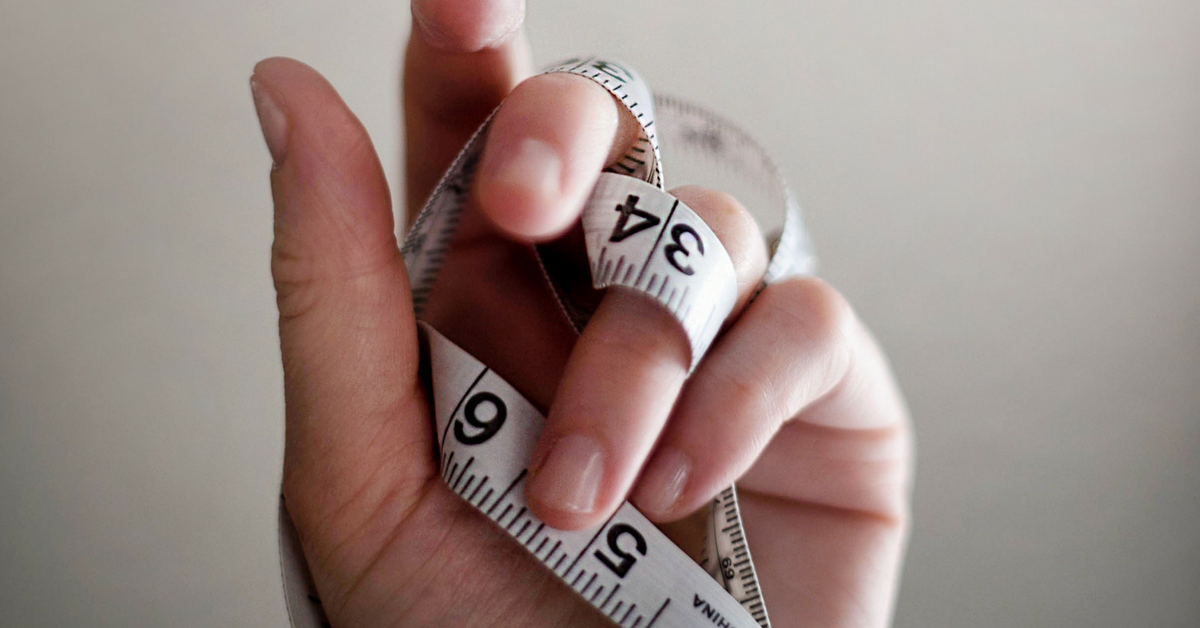
IIFYM: How much time do you usually like to give your clients to diet down for a show?
TNT: In my experience, 100% of the time: the more time that we have, the better the outcome. If they take the time to get ready for a show, their bodies will come in much LEANER, HARDER, and eating MORE food because of it (who wants to starve?) Those that are in panic-mode, are trying to cut a lot of weight to make the stage…typically look flatter, lose more muscle mass, and aren’t as lean.
I use macrotracker.com to track my macros. But when it comes to designating my personal or clients macros: no, I don’t use any website or calculator for that. I like to get a thorough history of the person and use informed knowledge for designating macronutrient numbers.
IIFYM: Do you rely on websites like MacroTracker.com to calculate your macros or can you just eyeball it?
TNT: If you’re referring to tracking MY PERSONAL macros, yes, I use Macrotracker.com to track my macros. But when it comes to designating my personal or clients macros: no, I don’t use any website or calculator for that. I like to get a thorough history of the person and use informed knowledge for designating macronutrient numbers.
IIFYM: What supplements do you encourage your clients to take while dieting? What about offseason?
TNT: I’m a huge fan of the quality and results from Core Nutritionals products. I’ve always firmly believed in the company and the quality of supplements they put out on the market…eventually, I was able to earn sponsorship from them!
TNT: I’m a huge fan of the quality and results from Core Nutritionals products. I’ve always firmly believed in the company and the quality of supplements they put out on the market…eventually, I was able to earn sponsorship from them!
The supplements I recommend while dieting are: Core ABC’s (aminos), Core PRO/ISO (protein), Core Fury Extreme (pre-workout), and their creatine monohydrate. In general, to ALL my clients, I recommend a good multivitamin, fish oil, and a fiber supplement (only if they need the added fiber.) In the off-season, add Core Alpha and Core Hard to the mix.
IIFYM: Who are your sponsors and how have they helped you get where you are?
TNT: I have two sponsors that have treated me extremely well, and as the fitness industry has shifted and changed, I can sincerely say it’s an honor to be part of both of their teams.
The first is Core Nutritionals. Doug Miller and the Core team are very respectable in the fitness world and they are growing at an exponential rate. They have always been very helpful with putting the TNT name out there and on social media. Just that support alone goes a long ways with me.
The second is MyOatmeal.com. This one goes out to you personally, Anthony. I don’t think I would be where I am today if it wasn’t for Anthony Collova and MyOatmeal.com. Anthony has helped me tremendously with business mentorship and just being an awesome friend and confidante. By being part of the MyOatmeal.com family, I have learned a thing or two about what quality of service is and how it should be provided to customers, which I’ve in turn provided to my own clients. I can’t thank you enough for everything!
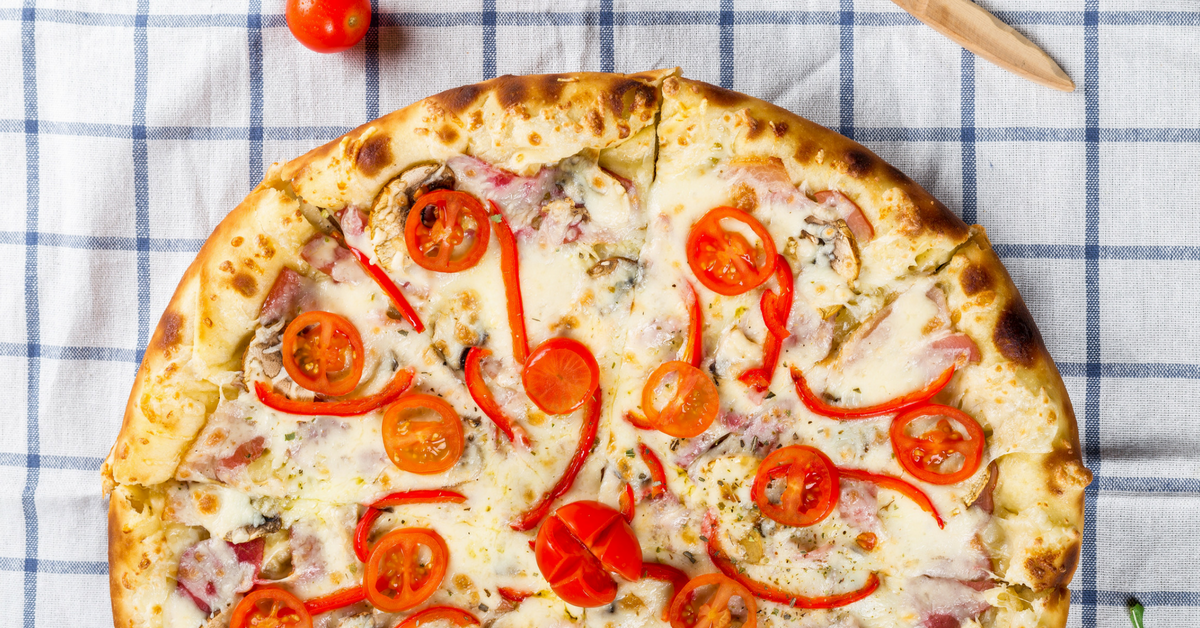
IIFYM: These next questions are from our followers on the IIFYM facebook page. We call this part of the interview “rapid fire”. Feel free to be as brief as possible.
-What is your favorite cheat meal?
Sushi or pizza, and on the regular: ice cream
Sushi or pizza, and on the regular: ice cream
-What are the lowest your calories get while dieting?
Lowest for me, ever, (and about a week in length before an increase) was 2000 calories…not my favorite range of macros!
Lowest for me, ever, (and about a week in length before an increase) was 2000 calories…not my favorite range of macros!
-What is the most food you have ever consumed in a day?
Years ago, if I had to guess, I probably have put down 10k or so calories in a day before…also, not my favorite experience.
Years ago, if I had to guess, I probably have put down 10k or so calories in a day before…also, not my favorite experience.
-How do you “grow into a show”?Eat MORE food and keep WATER HIGH!
-How many hours do you spend in the gym each day?
1.5-2 hours tops a session, 4-5 times a week depending on my workout for the day and how much time I need to recover between sets.
1.5-2 hours tops a session, 4-5 times a week depending on my workout for the day and how much time I need to recover between sets.
-Do you follow a periodized program?
Sure do!
Sure do!
-What kind of volume and frequency works best for your body?
High frequency, higher volume over time seems to respond better with my body.
-Does your training change when you start dieting for a show?
Typically not when I start the diet. But changes over the course of my prep.
-What are your thoughts on Crossfit?
When performed appropriately and in a safe manner, I don’t see anything bad with it. But…personally, I don’t have much interest in it; it’s just not for me.
-What is your favorite machine or apparatus at the gym
Squat rack
When performed appropriately and in a safe manner, I don’t see anything bad with it. But…personally, I don’t have much interest in it; it’s just not for me.
-What is your favorite machine or apparatus at the gym
Squat rack
IIFYM: Thank you for your time and insight Tyler! If someone wants to hire you as a coach, how do they contact you?
Originally posted 2019-01-29 03:44:51.
Tracking Macros While Dining Out: The 3 Best Approaches
Dining Out, If It Fits Your Macros Style
You’ve just been invited out to dinner with your friends on a Friday night and immediately feel some excitement at the thought. Soon after, however, anxiety sets in. What about your macros? You do after all have fat loss goals!
The great part about IIFYM and the if it fits your macros approach is that pretty much anything goes provided you hit your fat loss macros. If you want pizza, you can have it. Want some pasta? That’s fine too. While obviously, you should be focusing on nutritious choices as often as possible to promote health as well, the beautiful idea about Flexible Dieting is that you can eat what you crave and desire when you want it.
You have already calculated your macros at the IIFYM Macro Calculator, (if not, click here: IIFYM Macro Calculator) now you just need to ensure that it ‘fits’ into your daily allotment of carbs, protein, and fat.
And that’s where some people struggle as they go about this plan. At home, you have complete control over your food. You can weigh and measure everything, so it makes tracking your macros a breeze.
Less Control, More Room For Error
Unfortunately, at a restaurant, you have less control. This can pose a bit of a problem at times.
Knowing how to go about a restaurant meal out while sticking to your IIFYM Macros can help.
There are a few different levels of commitment to consider here. Which method you use will all depend on just how precise you want to be. Some people who are preparing for contests, for instance, will want the highest level of dedication because there’s not enough room for error.
Those who are using IIFYM simply to look and feel great may be able to use a lower level of commitment because, for them, exact precision every single day is just not required to reach their goals. So first assess yourself, then assess the levels of commitment and choose the one that’s relevant for you.

The Ultra Committed IIFYM Approach
The first approach is for the ultra-committed. This is for those who are preparing for a contest, looking to get to the most cut state possible, or for those who simply need to feel in control at all times.
Some people – usually the ‘Type A’ personalities can’t stand if they are not giving 110% effort every single time.
For them, the ultra-committed approach is the only way. Even though they may not theoretically have any reason for going to this level, it’s simply what they prefer.
And that’s fine!
This program is all about doing what makes you happy, so identify that and run with it.
Want an IIFYM Blueprint for only $47? Click here to get started with your Macro Blueprint
So what is the ultra-committed approach all about?
It’s about using the exact sample principles that you’d use at home, in a restaurant while dining out.
What you’re going to need to do is first look at the menu. What types of foods are available?
With any luck, you’ll be able to find some basic dishes. Grilled chicken, grilled steak, or fish that’s been just lightly seared are all fantastic options. If you can find a protein on its own like this, usually you’ll be able to also order some basic steamed vegetables and a side of rice to go with it. Or, perhaps you want a simple baked potato without any butter, cheese, or sour cream added.
“Request that the chef prepare your food without the addition of any butter, oil, or other sauces and bring your food scale along with you to the restaurant.”
Order the basic individual meal components that you’d have at home: a protein source, a healthy fat source, and a vegetable (and possibly a complex carb if you are having a higher carb meal).
Now when your food arrives, bring out your scale, weigh it and track those macros.
A few words on this approach.
First, you’ll want to be dining with friends/individuals who understand and support your goals (or at least be willing to take a few looks if they don’t). Whipping out a food scale in a restaurant setting may cause some comments, so you want to be sure that you can handle and/or are comfortable with this.
Second, even though you may ask your server for the chef not to use butter or oil, be sure to inspect the food a bit when it comes to your plate. While many restaurants will obey entirely, some may still attempt to liven the food up a little by adding certain elements.
Or, if the food was cooked with other foods drenched in butter, for instance, some of that may have rubbed off onto yours.
This isn’t the complete end of the world (and normally would not require you to send your food back), but it does mean that you should be a little more conservative with your macro tracking.
Build a little extra room in for fat and calories in case something was added. When you are seeking fat loss, it’s better to err on the side of caution and come up a little shorter than you thought than be on the other side and go over.
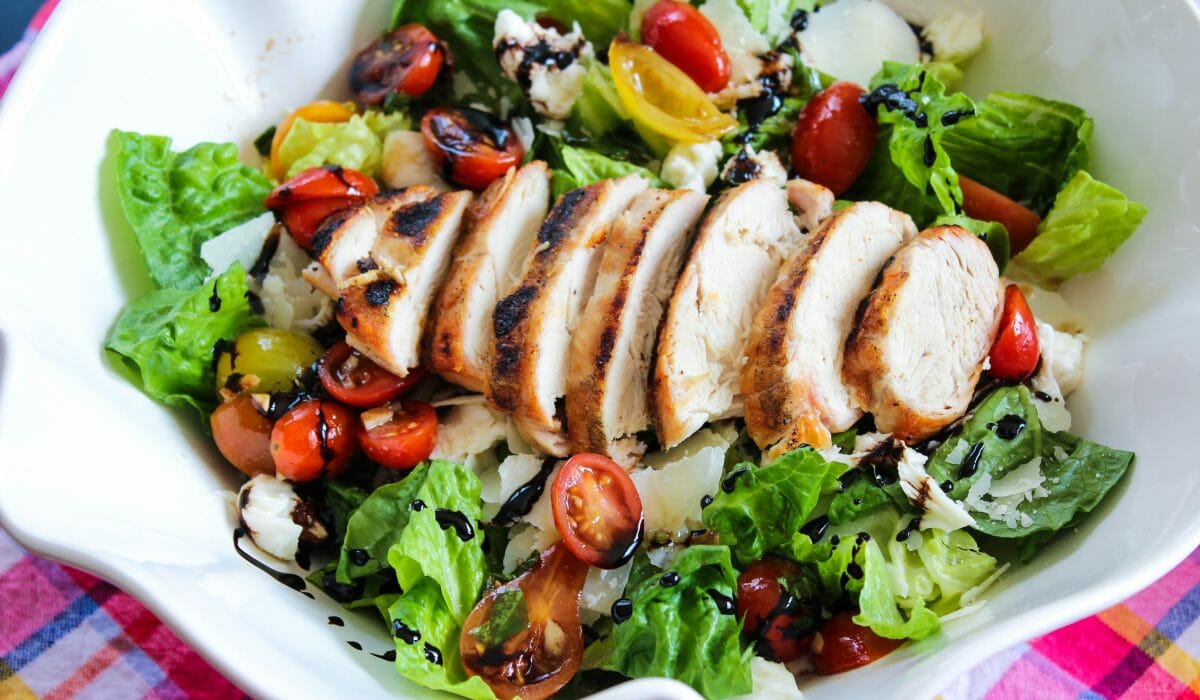
The Simplest Choices
Yet, if you want to be truly sure, the best item to order is a salad. Since a salad isn’t cooked in any way (except for the protein source that comes with the salad), you have less to worry about. When you request dressing on the side, there is no reason there should be any dressing on your salad (and if there is, do not feel guilty about sending it back!). Then the only issue may be a slight amount of oil on your chicken if any, which is much less for you to worry about.
Alternatively, for the protein source, if you are keeping everything clean while dining out, then sushi or cocktail shrimp if they offer it will be your best option. As no cooking is involved in either of these, again, you can ensure that it’s a fully clean option before it hits your plate.
A generous high-calorie meal may just do the trick to give you a tiny boost to your metabolic rate so once you do go back to tracking your macros, you start burning up body fat that much faster.
If you use this level of commitment, there’s not much need for anxiety about dining out as you are essentially doing the exact same technics you’d otherwise be doing.
One more note – if you are days away from walking onstage at a contest, the choice is simple: don’t go out at all. At this point, there isn’t any room for error, so your best bet is to simply pass on dining out this time and look forward to treating yourself to a feast once the contest is over.
The Committed Approach
Next, you have the committed approach. This is for those who want to stay committed, want to ensure they see optimal results, but who want to refrain from bringing their food scales with them to the restaurant.
At this level of commitment, you need to do some background work. How many calories are in the dish you want to order? What are the macros?
Often now, restaurants will post this information on their website, so ahead of time, browse the menu online. What looks great and can fit in with your macros?
Figure out what you want to eat ahead of time and plan for those macros in your day. This is a rather simple way to make dining out work for you
Just keep in mind that at times, the published nutrition stats and what you actually get may be slightly different, so again, build in some wiggle room. If you’re serious about fat loss, it’s better to be slightly under the estimate than go over.
No Need To Stress
If the nutritional stats are not published online, you might ask your server for them when you are at the restaurant. If that’s still not available, then you’ll simply need to focus on ordering individual food items (again, the grilled chicken breast, the baked potato, the side of steamed vegetables, etc.) and estimate from there.
Ordering these types of items will make estimation smoother than if you were to order say lasagna or a slice of pizza.
Keep in mind that even at this stage, you may st ill wish to focus on making modifications to your meal.
For instance, if you are ordering a grilled chicken Caesar salad, there’s nothing wrong with asking for light dressing or having it on the side.
Then just estimate your stats accordingly. While this will alter the published stats that you may have seen online, if it’s in the name of making the meal a better macro fit for your diet and you won’t feel that restricted by doing so, it’s a sound adjustment to make.
The basic healthy eating rules and guidelines for restaurant modifications can still apply (unless of course you are going for a cheat meal and want to eat something you’ve really been craving).
The Relaxed Approach
Finally, the last method we have is the relaxed approach. If you’re someone who just wants to go out and have a great time without worrying about nutritional stats or checking the menu online, that’s fine too.
If this is you, then simply cut yourself some slack. Know that if you are ‘on’ plan 90% of the time and 10% of the time you are indulging in foods that you crave without worrying about the nutritional stats, you can still see great results with the If It Fits Your Macros Approach.
It’s all about balance. Some people simply need those few times where they can cut loose and do what they want. For them, it helps them stick to the plan the rest of the time.
If you’re too relaxed with your diet due to its restrictive nature, have one of our coaches build your Macro Blueprint
If you know that’s you, dining out and eating whatever you want may actually do you more good than harm.
Secondly, if you are going to do this and go in eating whatever it is that you want, try your best to do it on a refeed day. If you’ve been low-calorie dieting for quite some time, there’s a real chance that your metabolic rate may be slightly sluggish.
A generous high-calorie meal may just do the trick to give you a tiny boost to your metabolic rate so once you do go back to tracking your macros, you start burning up body fat that much faster.
A well-timed refeed can be a great part of any clever diet plan and truly help you move along to the maximum level of success.
How To Best Utilize Tracking Macros While Eating Out
If you aren’t in need of a refeed (let’s say you did one a few days ago) but still want to go out and enjoy yourself, then you might consider instead, putting this meal immediately following your hardest workout of the week.
Try and hit the gym for an intense legs workout for instance before you go in with this mindset. This will at least help you shuttle the incoming calories and carbs to the muscle cells, prompting you to build some lean muscle mass rather than converting it to body fat stores.
So there you have the main levels of commitment to know about when it comes to dining out If It Fits Your Macros style. This fat loss method is one of the easiest ones to make work while dining out, so the excellent news is that you’re already ahead of the game compared to many of the other diet protocols out there.
With more and more restaurants also catering to those who are eating healthy and being willing to accommodate to modification requests, there should be no issue with forming a healthy meal for yourself using these guidelines.
Then it’s all about you determining just how committed you want to be in sticking with the plan. Remember there is no right or wrong method here, but rather, what works best for you.
Originally posted 2019-01-28 03:28:26.
Carbs at Night: Fat Loss Killer or Imaginary?
1. So where did this ‘no carbs at night’ thing come from?
There are quite a few things that everyone in the fitness industry KNOWS. You have to eat 8 meals per day, consume 400g+ protein per day, do fasted cardio, use heavy weights to bulk up, and light weights wit high reps to tone up… oh wait, those are all BROSCIENCE! Don’t get me wrong, bodybuilding and fitness have been on the cutting edge of many dietary and training interventions that mainstream science is only now catching up.
Unfortunately, the vetting process for many of these protocols isn’t exactly stringent. Thus, many things become accepted as fact, when in reality they are BROSCIENCE. The debate about whether or not it’s ok to have carbs at night has been all but settled in the fitness industry. You simply can’t consume a shred of carbohydrates at night or you will store fat faster than vampire rises after the sun sets! That is, according to many fitness ‘experts’ out there, most of whose credentials are worth about as much as a thin sheet of slightly used one ply toilet paper.
So Anthony Collova, owner of Broscience.com and IIFYM.com asked me to look into this fitness factoid to determine if eating carbs at night was actually detrimental to your body composition or if it was all bro-science.
In order to properly asses this fitness ‘fact’ we need to understand why limiting carbs at night is recommended in the first place. Most ‘experts’ who recommend limiting carbs at night do so because their assertion is since you will be going to sleep soon, your metabolism will slow down and those carbohydrates will have a greater chance at being stored as fat compared to if they were consumed earlier in the day where they would have a greater probability of being burned. Seems reasonable, but broscience always ‘sounds’ reasonable.
They also often assert that insulin sensitivity is reduced at night, shifting your carb storing directionality towards fat and away from muscle.
Let’s tackle the issue of metabolic rate slowing down at night time first. The logic behind this theory seems reasonable enough: you lie down in a bed and don’t really move, just sleep, so obviously you are burning less calories than if you are awake doing stuff, even if you are just sitting in a chair or couch resting, you have to burn more calories than just sleeping right? At first glance this seems to jive with work from Katoyose et al. which showed that energy expenditure decreased during the first half of sleep approximately 35% (1).
However, these researchers did show that during the latter half of sleep energy expenditure significantly increased associated with REM sleep.
So, there are rises and falls in sleeping metabolic rate (SMR), but what is the overall effect? Interestingly, at the very least it does not appear that the average overall energy expenditure during sleep is any different than resting metabolic rate (RMR) during the day (2, 3). Additionally, it appears that exercise increases sleeping metabolic rate significantly leading to greater fat oxidation during sleep (4).
This seems to be in line with data from Zhang et al. which demonstrated that obese individuals had sleeping metabolic rates lower than their resting metabolic rates, whereas lean individuals had sleeping metabolic rates significantly greater than their resting metabolic rate (3).
So unless you are obese, not only does your metabolism NOT slow down during sleep, it actually increases! The idea that you should avoid carbs at night because your metabolism slows down and you won’t ‘burn them off’ definitely doesn’t pass the litmus test.
2. So the whole ‘don’t eat carbs at night’ thing is definitely broscience right?
So far, the fear of carbs at night certainly smells like broscience, but before we render a verdict, let’s examine things further. There is also the issue of insulin sensitivity and glucose tolerance to address. This is where things get interesting. Compared to morning meals, levels of blood glucose and blood insulin definitely remain elevated longer with evening meals (5, 6). Ah ha! There it is, proof, that you shouldn’t consume carbs at night right? Not so fast.
Though insulin sensitivity and glucose tolerance appear to be worse at night compared to a morning meal, it is important to keep in mind that a morning meal is after an overnight fast and the fast may improve insulin sensitivity. Perhaps a more fair comparison is a mid day meal vs. a night time meal. In this case there is actually no difference in insulin sensitivity or glucose tolerance (5).
Therefore, it appears that insulin sensitivity and glucose tolerance are not necessarily impaired and night, but rather are merely enhanced by an overnight fast.
3. Does any of this science mumbo jumbo actually make a difference?
While it is great to talk about mechanisms and nitpick every intricate detail about metabolism, at the end of the day, we have to examine whether or not any of this stuff makes any difference. Fortunately for us, a recent study published in the Journal of Obesity examined this very question (7). These researchers from Israel put people on a caloric-ally restricted diet for 6 months and split them into two groups, a control group and an experimental group.
Each group consumed the same amount of calories, protein, carbohydrates, and fat but they distributed their carbohydrate intake very differently. One group (control) ate carbs throughout the day, whereas the experimental group consumed the majority of their carbohydrate intake (approximately 80% of the total) at the night. What they found after 6 months may shock you. Not only did the experimental group consuming the majority of their carbs at night lose significantly more weight and body fat than the control group, they also were better satiety and less hunger!
4. Whoa hold up… less hunger? I don’t buy it.
You heard me right, they were less hungry. Now I’m sure all of you that have been following typical fitness protocols where you eat 6 times per day and have most of your carbs earlier in the day are thinking “man if I went more than 2-3 hours without carbs I’d be starving!” Well my friends you are buying into a vicious cycle I’m afraid. Let me explain: when you eat small amount of carbs frequently you are basically titrating in glucose to your system.
To dispose of this glucose your body releases insulin to drive blood glucose into cells. Over-secretion of insulin however may cause hunger to rise (typically about 2-3 hours post meal, the approximate time course of an insulin response), but no problem, you are eating every 2-3 hours anyway right? Just titrate in some more glucose. Unfortunately this makes you crave and consume glucose like clockwork and tricks many people into thinking that they NEED carbs every 2-3 hours or they would be hungry when in fact the opposite is true.
If you ate carbs less frequently with further time between carb dosing, you would be less hungry because your own body would ramp up systems that deal with endogenous glucose production, and keep your blood glucose steady. When you consume carbs every 2-3 hours however this system of glucose production (gluconeogenesis) becomes chronically down regulated and you must rely on exogenous carb intake to maintain your blood glucose levels.
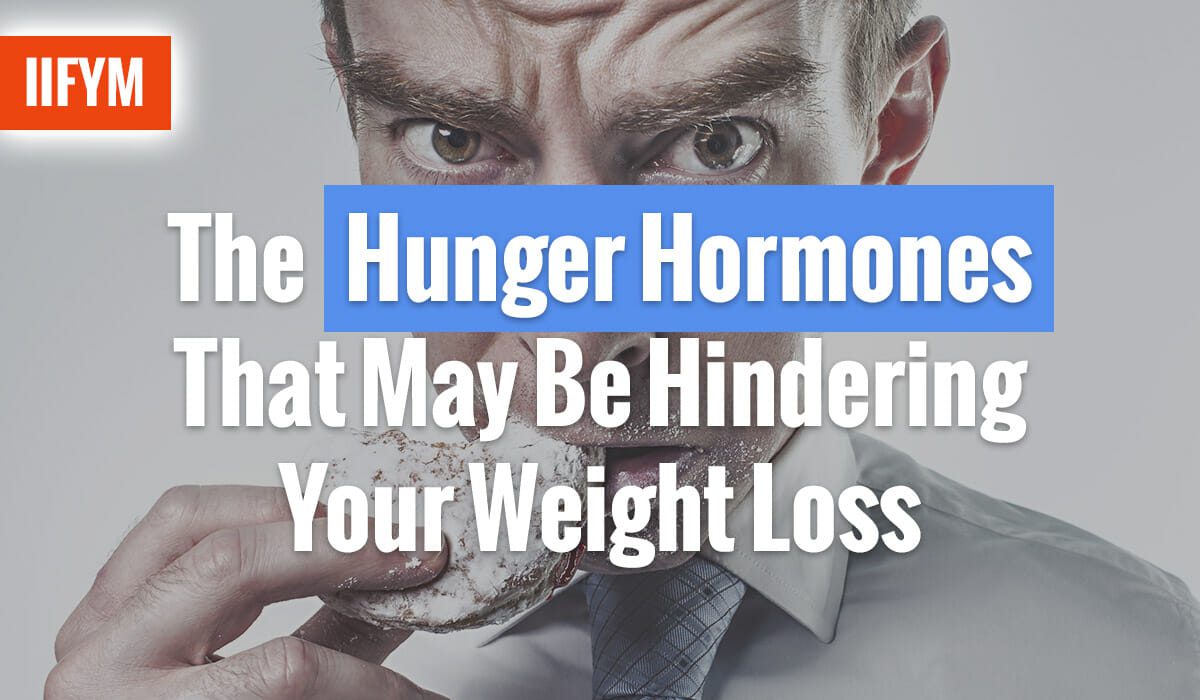
Now if you transition from eating carbs every 2-3 hours to further apart for the first few days you may be hungry until your body has adjusted to using Gluconeogenesis to maintain blood glucose rather than just eating carbs every 2-3 hours, but once you do adjust, you will find that you are far less hungry. Bringing things full circle, this is exactly what the researchers found! These subjects were hungrier in the first week of the diet compared to 90 and 180 days into the diet where they were much more satiated.
So what’s the explanation for the night time carb group losing more body fat and being more satiated than the control group (maybe we should call them the ‘bro’ group)? The researchers postulated that more favorable shifts in hormones may be the difference. The baseline insulin values in the experimental group eating the majority of carbs at night were significantly lower than those eating carbs during the day (7).
So much for carbs at night decreasing insulin sensitivity huh? Additionally, the experimental group had much higher levels of adiponectin, a hormone associated with increased insulin sensitivity and fat burning. They also had a trend for slightly higher leptin levels. Furthermore, the night time carb munchers had lower levels of LDL (bad) cholesterol and higher levels of HDL (good) Cholesterol.
Overall the people eating the majority of their carbs at night lost more body fat and had better markers of health by the end of the study than those who ate more of their carbs during the day time.
5. So what’s the verdict?
I am not ready to say that we should all be eating the majority of our carbs at night. I would like to see this study repeated but with a bolus amount of carbs eaten at one meal in the morning to properly compare it to the single high carb meal at night, whereas the previous study compared a bolus night time carb meal vs. several feedings of carbs throughout the day.
It may very well be that the beneficial effects of the diet in this study was more associated with limiting carb dosing (and insulin secretion) to a single bolus rather than spreading them throughout the day.
However, I think what can be said with relative certainly is the notion that consuming carbohydrates at night will lead to more fat gain, or impair fat loss compared to consuming them at other times of the day. So write it down “Don’t eat carbs at night bro” has officially been BUSTED as BROSCIENCE!
6. Literature Cited
– Katayose Y, Tasaki M, Ogata H, Nakata Y, Tokuyama K, Satoh M. Metabolic rate and fuel utilization during sleep assessed by whole-body indirect calorimetry. Metabolism. 2009 Jul;58(7):920-6.
– Seale JL, Conway JM. Relationship between overnight energy expenditure and BMR measured in a room-sized calorimeter. Eur J Clin Nutr. 1999 Feb;53(2):107-11.
– Seale JL, Conway JM. Relationship between overnight energy expenditure and BMR measured in a room-sized calorimeter. Eur J Clin Nutr. 1999 Feb;53(2):107-11.
– Zhang K, Sun M, Werner P, Kovera AJ, Albu J, Pi-Sunyer FX, Boozer CN. Sleeping metabolic rate in relation to body mass index and body composition. Int J Obes Relat Metab Disord. 2002 Mar;26(3):376-83.
– Mischler I, Vermorel M, Montaurier C, Mounier R, Pialoux V, Pequignot JM, Cottet-Emard JM, Coudert J, Fellmann N. Prolonged daytime exercise repeated over 4 days increases sleeping heart rate and metabolic rate. Can J Appl Physiol. 2003 Aug;28(4):616-29.
– Mischler I, Vermorel M, Montaurier C, Mounier R, Pialoux V, Pequignot JM, Cottet-Emard JM, Coudert J, Fellmann N. Prolonged daytime exercise repeated over 4 days increases sleeping heart rate and metabolic rate. Can J Appl Physiol. 2003 Aug;28(4):616-29.
– Biston P, Van Cauter E, Ofek G, Linkowski P, Polonsky KS, Degaute JP. Diurnal variations in cardiovascular function and glucose regulation in normotensive humans. Hypertension. 1996 Nov;28(5):863-71.
– Van Cauter E, Shapiro ET, Tillil H, Polonsky KS. Circadian modulation of glucose and insulin responses to meals: Relationship to cortisol rhythm. Am J Physiol. 1992 Apr;262(4 Pt 1):E467-75.- Sofer S, Eliraz A, Kaplan S, Voet H, Fink G, Kima T, Madar Z. Greater weight loss and hormonal changes after 6 months diet with carbohydrates eaten mostly at dinner. Obesity (Silver Spring). 2011 Oct;19(10):2006-14.
– Van Cauter E, Shapiro ET, Tillil H, Polonsky KS. Circadian modulation of glucose and insulin responses to meals: Relationship to cortisol rhythm. Am J Physiol. 1992 Apr;262(4 Pt 1):E467-75.- Sofer S, Eliraz A, Kaplan S, Voet H, Fink G, Kima T, Madar Z. Greater weight loss and hormonal changes after 6 months diet with carbohydrates eaten mostly at dinner. Obesity (Silver Spring). 2011 Oct;19(10):2006-14.
The No-Excuse At-Home Resistance Band Workout
I know what you’re thinking… “Matt, I lift free weights – heavy ones at that. Why would I do or even consider a resistance band workout?” Well, for many reasons actually. People like to downplay a resistance band workout or utilizing resistance band exercises in their training as if it’s worthless – it’s not. And this IIFYM.com article is going to show you why and how to utilize this strategy.
Why YOU Should Use a Resistance Band Workout
There are many reasons you should implement resistance bands into your training program. The first could be because you are strapped for time and can’t make it to the gym or you’re at home and the weather outside doesn’t make it ideal for traveling to the gym. Rather than completely skipping your workout, you can utilize resistance band exercises to stimulate muscle fibers. Additionally, resistance bands (even as a set) is extremely compact to the point where you can pack it in your suitcase and take it with you on business trips or vacations. You have no excuses when you have resistance bands.
Now, be realistic with your expectations here. You’re not going to have 315 pounds of resistance like you would on a bench press with three wheels on each side. So, simmer down He-Man. What you are able to do is get an amazing squeeze out of each rep of your resistance band exercises and completely exhaust the muscle and feel a deep burn in the tissue.
Some resistance band companies sell their products as a set that includes various resistance bands as well as attachments. This allows you to hit your entire body in the privacy of your own home. If I were to make one suggestion, it would be to find a brand (like Bodylastics) and purchase one of their complete sets based off of your strength level and needs/goals.
Something else to think about is the constant tension you get from resistance band exercises. If you think about it, there is constant tension on the muscle at all times pushing and pulling on a muscle where you won’t have the ability to “rest” or “relax” during an exercise. While you may not be utilizing the same weight you use in the gym, a resistance band workout is more than enough to help stimulate muscle growth and help you achieve your fitness and physique goals.
Total Body Resistance Bands Workout You Can Do Anywhere
I’m going to give you a workout program at the end of this article, but if you wanted the trained professionals at IIFYM.com to create an individualized nutrition program for you to help speed up your progress, sign up for their IIFYM Custom Macro Blueprint to get started.
Additionally, if you wanted to set up your own diet, you can use the IIFYM calculators to get the information needed to plan out an IIFYM diet on your own.
Resistance Band Exercises
To start off, let’s look at all of the different resistance band exercises you can do at home.
- Crunch
- Twisting Crunch
- Trunk Rotation
- Side Bend
- Various Grip Pull-Down
- Row
- Back Fly
- Straight-Arm Pushdown
- Chest Press
- Incline Press
- Decline Press
- Chest Fly
- Squat
- Leg Extension
- Leg Curl
- Deadlift
- Calf Raise
- Shoulder Press
- Side Lateral
- Front Lateral
- Bent-Over Rear Lateral
- Upright Row
- Biceps Curl
- Concentration Curl
- Hammer Curl
- Triceps Kickback
- Triceps Pushdown
- Triceps Extension
And this is only the tip of the iceberg. You can get creative with your exercise variations as well. But, as you can see, you can utilize a variety of resistance band exercises to compile a complete resistance band workout.
You can even take exercises from workout programs you found online or books like the IIFYM Laser Legs book and implement the same program, only using resistance bands to change things up and stimulate the muscle fibers differently.
The At-Home Resistance Band Workout
For the resistance band workout I’m providing below, complete one exercise after the other without resting in between until you reach the end, then allow yourself a 45-60 second rest period before starting over again. This style of training is called a “circuit.” It’s where you are continuously moving from one exercise to the next with no rest in between to keep your heart rate elevated and help you burn more calories during your workout.
For each of the resistance band exercises, complete 10-15 repetitions. Complete anywhere from two to four complete circuits based on your current fitness level. Push yourself each workout to achieve more reps or more total circuits. While the program is fairly basic (to allow all fitness levels to utilize it), you can make it more challenging by slowing down your reps to increase the time-under-tension.
*As with any IIFYM exercise plan or IIFYM nutrition program, it is advised that you consult with your doctor prior to ensure you are healthy enough to engage in such a program.
To complete the resistance band workout, the only thing you will need is enough room in your home to complete the exercises safely, as well as your resistance band(s).
Leave a minimum of one day’s rest in between your resistance band workout to allow your body to properly rest and recover. So, for instance, if you do a workout on Monday, wait until Wednesday at the earliest to complete the workout again (this is assuming you are following the exact full-body workout shown below). Cardio, on the other hand, can be completed each day (seven days a week) if you wish to do so.
Warm-up before beginning each workout by engaging in some low-intensity cardio such as jumping jacks or walking up and down the stairs for five minutes to get the blood pumping and help get the muscles warmed up. Once your warm-up is completed, you can move ahead with the workout below.
If you intend on doing cardio the same time you plan on doing your resistance band workout, complete your cardio AFTER you are completely done with your resistance training.
| Exercise | Reps |
| Squat | 10-15 |
| Deadlift | 10-15 |
| Calf Raise | 10-15 |
| Pull-Down | 10-15 |
| Row | 10-15 |
| Chest Press | 10-15 |
| Chest Fly | 10-15 |
| Shoulder Press | 10-15 |
| Side Lateral | 10-15 |
| Triceps Pushdown | 15-20 |
| Biceps Curl | 15-20 |
| Crunch | 10-15 |
| Side Bend | 10-15 |
What is the best way to start IIFYM after a low carb diet?
Switching from a low carb diet or keto to flexible dieting can be a bit tricky. Not due to IIFYM mind you, but due to the fact that when eating such a low carb diet, your body has been trained to perform a certain way.
Once you start adding carbs back into your diet, your body might love it, or hate the change. It really depends on how long you were in depriving your body of glycogen for. If you we eating low carb or keto for a few months, your transition into flexible dieting will probably be a cake walk. All you’d have to do is slowly increase carbs over a period of 3-6 weeks until you get to your daily allotment.
If you were doing keto or Atkins for a year or more, you might run into a bit of glycogen rebound (don’t research that term, I just made it up – basically just added weight from sodium, water, glycogen and fat depending on how hard you go with your carb orgy).
Simplest Approach Moving Forward
The best action most people can take is to ease back into a regular diet that includes all three macronutrients. Moving into it slowly, and following a structured program will help keep you focused so you don’t pig out on everything you were craving while you were eating such low carbs.
Simply put, The best way to come off of a low carb diet or low-calorie diet it to reverse out of it.
Before I go any further I want to be clear, that I am not talking about any of the popular reverse diets that are designed to rebuild your metabolism. I am simply talking about introducing carbs back into your diet in a slow and methodical fashion that will ensure a smooth and body fat-free transition.
Let me also say that the best way to reverse out of any kind of diet is with the help of an experience nutrition coach. Click here to see our IIFYM Coaching programs.
Where To Start Your Journey Post Low Carb
If you have decided to go it alone, and not use a coach to guide you out of your low carb madness you will want to start by visiting our IIFYM macro calculator.
When you first input your numbers into our IIFYM Calculator, you will be given a specific amount of carbs to eat. Many people that have been on a low carb diet usually (not always) have developed some sort of fear of carbs. Don’t worry, it happens to the best of us.
Even elite level bodybuilders develop this phobia over time. Luckily there are great contest prep coaches out there that are doing an awesome job helping athletes and general population dieters come out of these low carb nightmares and restore their metabolism.
Following a simple program like this, rather than pigging out on every single carb source you set your eyes on, will ensure that you transition smoothly into IIFYM with as little unwanted body fat gain as possible.
Most people want to jump right into the new macros that the IIFYM Calculatorgives them but they forget that those numbers are what a person with a healthy metabolic capacity should be eating.
If you have been low carb dieting for a good amount of time, you will certainly gain weight (water and glycogen mostly, with some fat and hopefully a little muscle), which is when most people get discouraged, quit, and then claim that IIFYM does not work.
The issue, however, is not with IIFYM, it is with their metabolism, but more importantly, the speed at which they jumped into the new macros, and in many cases, simply because they were counting macros incorrectly.
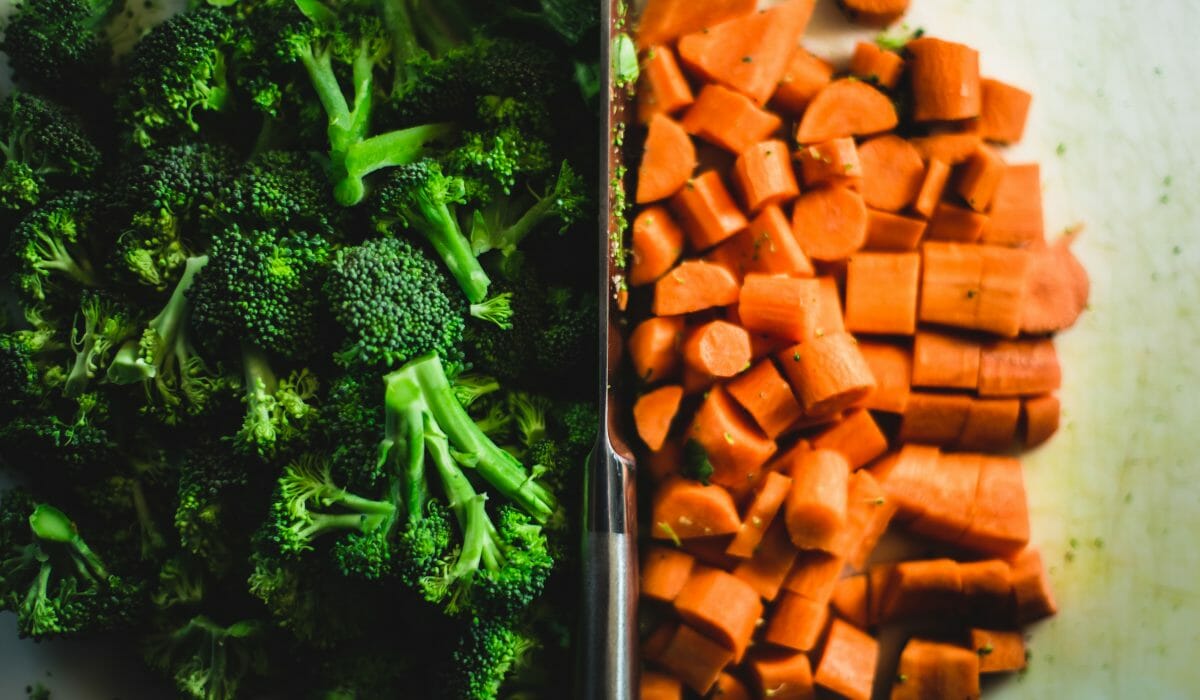
If you go it alone, you will have to follow some sort of cookie cutter plan, and modify it as you progress. Basically, stay low, and slowly increase carbs over a 4-8 week period. If you were following a true ketogenic diet, your fats should have been very high. While reverse dieting your fats will need to come down, while your carbs will increase slowly.
A cookie cutter program for someone transitioning out of keto, into IIFYM might look something like this if they are trying to eat at caloric maintenance levels (TDEE):
Week 1
- Protein – Hit the number our Macro Calculator gives you
- Carbs – Hit 60% of the carbs our Macro Calculator gives you
- Fat – Multiply the fat our Macor Calculator gives you by 1.25
Week 2
- Protein – Hit the exact number our Macro Calculator gives you
- Carbs – Hit 70% of the carbs our Macro Calculator gives you
- Fat – Multiply the fat our Macor Calculator gives you by 1.25
Week 3
- Protein – Hit the exact number our Macro Calculator gives you
- Carbs – Hit 80% of the carbs our calculator gives you
- Fat – Hit the number our Macro Calculator gives you
Week 4
- Protein – Hit the exact number our Macro Calculator gives you
- Carbs – Hit 90% of the carbs our calculator gives you
- Fat – Hit the number our Macro Calculator gives you
Once you have completed these 4 weeks you can eat the exact number of macros our macro calculator gives you, or if you wish to be prudent, you can keep increasing them slowly.
If you were not on a ketogenic diet, and simply just eating very low carbs (the difference being the amount of fat you eat for energy while in ketosis) then you could simply follow the above cookie cutter program without adjusting your fats at all. Hit your protein and fat, and slowly bring carbs up over a 4-6 week period.
Again, this is a cookie cutter plan, rudimentary program. It is basic, shrewd, limited and ugly, but it is a solid start if you are the kind of person that needs a bit of guidance before you jump in IIFYM without a coach.
Originally posted 2019-01-30 17:23:29.
50 Workout Songs for Cardio
If you’re reading this, you’ve likely already embraced our playlist of the best workout songs available for heavy lifting and PRs. You’re breaking more PRs than a bull breaks china, and now you’re mentally preparing for the next major challenge for anyone that steps in the gym- cardio.
Yes, yes, we know. Just hearing the word makes us queasy too; but in the name of six packs and Snap Chat, we all have to embrace the struggle sometime or another.
(Side note: If you are looking to achieve any health or physique goal (such as six-pack), you’ll need a balanced diet. Here’s the place to start: IIFYM macro calculator)
Unless you’re one of the rare few that actually enjoy cardio for pleasure, you’re probably always one lame excuse away from skipping cardio altogether. After all, maybe you don’t need nice abs if you’re funny enough or have a nice singing voice?
Why You Are Here
Okay, we understand, maybe you do need nice abs to help you out a bit. We’re right there with you, and if experience has taught us anything, it’s that the best workout songs fuel some of the best cardio sessions.
No matter why you’re doing cardio, it’s nearly universally accepted that it doesn’t take much convincing for us to skip it. Fortunately, we’re here to help you push through and lean out, by providing our collection of workout songs to rock out to during cardio.
This playlist will help you walk, run, or sometimes maybe even crawl your way to finishing those cardio sessions and stepping closer and closer to your current physique goals.
Turn off your radio, because DJ Mac Rose (macros, get it?) is dropping the ultimate list of the absolute workout songs to help you embrace the shredz!
The Criteria

Criteria for the Best Workout Songs for Cardio
- Songs that dropped within the past 5 years
- EDM, Pop or Alternative Rock to keep your spirits as high as your heart rate
- Upbeat and empowering, because we all need as much help as we can get during cardio
- Top 50 selections to fuel your cardio sessions all week long
The Picks
I don’t care if you’re a 250lbs male bodybuilder that just finished deadlifting the equivalent of a small car, you’re undoubtedly jamming out to some guilty pleasure on your way home sometimes.
We’re right there with you, and after all the hard heating beats from our IIFYM Heavy Hitters workout playlist, what better time to balance out the hype with some easy listening, empowering pop hits? Male or female, athlete or general population- these songs are outright awesome. Don’t worry, we won’t tell anyone you’re lip-syncing Taylor Swift on the treadmill; it can be our little secret.
Best Workout Songs for Cardio Playlist
| Artist(s) | Song |
|---|---|
| Sean Paul, Migos | Body |
| Blink-182 | Bored to Death |
| The Chainsmokers,Halsey | Closer |
| Post Malone, Quavo & Future | Congratulations – Remix |
| Demi Lovato | Cool for the Summer |
| Post Malone, Justin Bieber | Déjà vu |
| DJ Khaled, Calvin Harris, Travis Scott | Don’t Quit |
| Halsey | Eyes Closed |
| Calvin Harris, Pharrel Williams, Katy Perry | Feels |
| Sleeping with Sirens | Fly |
| Kid Cudi | Frequency |
| Busta Rhymes, Vybz Cartel, Torey Lanez | Girlfriend |
| Macklemore ft. Skylar Grey | Glorious |
| American Authors | Go Big or Go Home |
| Fitz and the Tantrums | HandClap |
| Sweater Beats | Hey Ya |
| Fergie ft. Rick Ross | Hungry |
| DJ Khaled, Justin Bieber, Migos | I’m the One |
| Fall Out Boy | Immortals |
| Fall Out Boy | Irresistible |
| Day Jack | Kick – Door |
| Major Lazer, Travis Scott ft. Quavo | Know No Better |
| Kesha, Eagles of Death Metal | Let ‘Em Talk |
| Taylor Swift | Look What You Made Me Do |
| SZA, Travis Scott | Love Galore |
| Hailee Steinfeld | Love Myself |
| J Balvin, Willy William | Mi Gente |
| DJ Snake, Bipolar Sunshine | Middle |
| Lil Uzi Vert ft. Pharre Williams | Neon Guts |
| Dua Lipa | New Rules |
| The Chainsmokers | New York City |
| Post Malone | No Option |
| DJ Snake, Yellow Claw | Ocho Cinco |
| Post Malone | Patient |
| The Weeknd | Reminder |
| OneRepublic, Seeb | Rich Love |
| Twenty One Pilots | Ride |
| Hailee Steinfeld, DNCE | Rock Bottom |
| Fitz and The Tantrums | Roll Up |
| Calvin Harris, Future, Khalid | Rollin |
| The Weeknd | Secrets |
| Foster The People | SHC |
| WALK THE MOON | Shut Up and Dance |
| Mondo Cozmo | Sixes and Sevens |
| The Chainsmokers, Coldplay | Something Just Like This |
| The Weeknd, Daft Punk | Starboy |
| Liam Payne, Quavo | Strip That Down |
| French Montana, Swae Lee | Unforgettable |
| DJ Khaled, Rihanna, Bryson Tiller | Wild Thoughts |
| Skrillex, Poo Bear | Would You Ever |
Cue the Cardio

There’s no denying that cardio sessions can outright suck. Your workweek is already long, weight training sessions brutal, and time never seems to be on your side when it comes to your to-do list. As challenging as it may be at times, the right tunes can certainly help lighten the load.
Finding the best workout songs can make the difference between time crawling by and having a personal jam session as you’re stepping ever closer to becoming a lean, mean, cardio machine!
Okay already, you’ve procrastinated long enough. Fat needs losing and cardio needs doing, it’s time to get down to body fat burning business. Lucky for you, we’ve eliminated an excuse you can use for putting off cardio any longer.
We’ve created an official Spotify playlist with the best workout songs selections for your upcoming cardio. Just visit the link below to access the best workout songs through our “IIFYM Cardio Killer” Playlist!
Originally posted 2019-01-29 03:23:18.
Interviews Brandan Fokken -IIFYM.com
IIFYM: Thanks for taking the time out to speak with IIFYM.com Brandan.
I know you are extremely popular in the bodybuilding and fitness world, but for those IIFYM.com readers that don’t recognize your name, would you please tell us a little bit about yourself and your position in the health and fitness industry?
I know you are extremely popular in the bodybuilding and fitness world, but for those IIFYM.com readers that don’t recognize your name, would you please tell us a little bit about yourself and your position in the health and fitness industry?
BF: Well I do a lot of various things. I am a corporate wellness coordinator for the worlds largest ethanol company. I have a successful prep business called “Fokken Strong Training”, I have 13 sponsors Bodybuilding.com, Beast Sports Nutrition, Quest, P28 foods, MuscleEgg to name a few. I am a physique competitor, fitness model, published writer, and I speak about health and fitness at universities and corporations around the country.
IIFYM: When did you first get involved in fitness and at what point did you realize that modeling was an option?
BF: I have been active my whole life and weight training since I was 14. I always wanted to be big and strong and that was it. I never even competed until I was 30! From there things spiraled for me and a lot of positive things started to happen. I actually did my first photo shoots as favors to some photographer friends of mine. I soon realized I could use those images to market myself and potential companies I wanted to work with.
I NEVER actually thought I would make it into any of the major fitness magazines. It wasn’t even a goal for me because I didn’t think it was possible. Slowly though I started to appear in ads in some of the smaller magazines and eventually worked my way up to all of the larger ones.
I have a lot of content waiting to be released and a lot of photo shoots already set up this year. I will say however that I do some fitness modeling from time to time; I am NOT a fitness model. I only consider someone who could make a living at it a legit fitness model. For me I do it because I enjoy it and its allowed me to do many things I never thought I would get the opportunity to do.
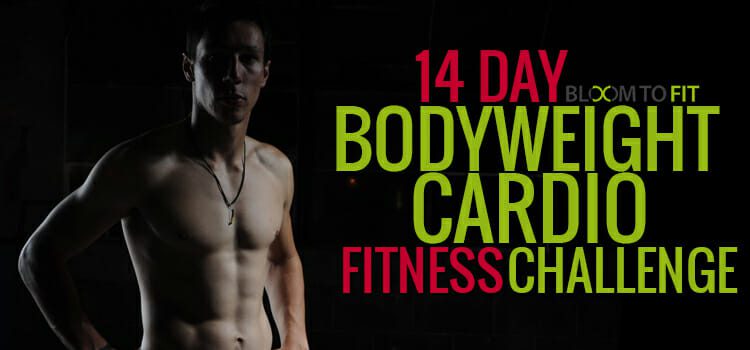
IIFYM: Posing for so many photo shoots, I am sure you need to stay leaner than most bodybuilders year round. I have seen some of your magazine spreads and you always look to be about 5-6% body fat or so sometimes leaner. Do you ever let yourself get out of shape, and if so, what would you consider “out of shape” to be?
BF: I actually do let myself go a bit. I take time off after what I call my “season” which is usually May-Nov to give myself a break. Maybe take some vacations, eat what I want and give my body some time off, but also time to really grow. I cut a lot of muscle when I compete, so the years I compete I like to especially have that time off to build back what I lost.
IIFYM: What about bodybuilding? Can you tell us a bit about your competitive career?
BF: I started my competitive career in bodybuilding as a light heavy weight. I then worked up to heavy weight and physique from there. Physique has been hugely successful for me and is far more marketable for me than bodybuilding ever would have been.
At 6’1 I was never going to be a 300 lb monster so the physique class suits me and my current goals, Although I will ALWAYS have a love for bodybuilding.
Contest history:
- 2010 Fargo Upper Midwest light heavy 3rd place
- 2010 Minneapolis Gopher State Classic 2010 light heavy 1st place
- 2011 Fargo Upper Midwest heavy weight 1st place
- 2011 Minneapolis Gopher State Classic Physique 2nd place
- 2011 NPC USA’s Physique tall class 16th out of 32
- 2011 Muscle and Fitness Gaspari Super Pump Challenge Online Winner
- 2011 Muscle and Fitness model contest “Olympia expo ” 4th out of 53
- 2011 Minnesota State North Star Physique mixed class 3rd overall
- 2011 Photo Vision model
- 2011 World Physique magazine competitor of the month and “promoting greatness” winner
- 2012 Bodybuilding.com Body Space Spokes model finalist
- 2012 Bodybuilding.com Body Space spokes model contest LA expo 5th place
- 2012 Muscle and Fitness Online Winner *First two time winner*
- 2012 Bodybuilding.com “Amateur of the Week July 2012”
- 2012 Bodybuilding.com 2012 “Top 20 Extreme Physiques”
- 2012 Bodybuilding.com 2012 “Top 20 Extreme Physiques Part Two”
- 2012 Muscle and Fitness model contest “Olympia expo” 6th out of 64
- 2013 Muscle and Fitness Online Winner *First three time winner*
- 2013 Muscle and Fitness model contest “Olympia expo” 2nd out of 70
- 2013 Minnesota State North Star 2nd
- 2013 Oregon Seven Feathers 2nd
- 2013 NIKE promo model/athlete
Have also won many online titles not listed above.

IIFYM: Why men’s physique instead of bodybuilding? I’ve seen you in person and you are jacked!!
BF: I actually did my first physique show two weeks after winning my class at heavyweight at the Upper Midwest in Fargo. I tore a muscle in my quad and my leg swelled all up and it looked really bad. That was at the same time physique had come out.
I was going to do that second show after Fargo, but knew that my leg looked like hell. So my coach suggested physique. I initially didn’t want to do it and thought I would get made fun of, but ended up giving in and tried it anyways.
I essentially went zero carbs for two weeks and lots of cardio to try and bring my size down. I never carbed up or pumped up as to not look too big. I ended up taking 2nd behind my friend Trevor Larsen who is now a pro. From there I was hooked.
IIFYM: What do you feel is your most lagging body part and what are you doing to turn it into an asset?
BF: My legs. Yea you can say what you want about physique guys not having legs. Are mine perfect? No… But I’m not ashamed of myself. I train hard in all that I do, but my legs are def something I would really like to bring up.
That’s one body part that when you have a jacked set of wheels people take notice, not many can say they do. I have started training them twice a week and its paid off so far.
IIFYM: Can you give the IIFYM diet community a taste of what your contest prep diet is? What are your macros and what kinds of foods do you eat?
My diet is pretty simple. I used to measure every single thing to the ounce but this last prep I really let loose and eyeball measured everything. I changed my proteins when I wanted, at a lot of beef and had weekly cheat meals.
I kept those mostly cleaner cheats, meaning I didn’t gorge myself on fast food etc. My body reacts well to fats so I usually will implement a lot of fat into a cheat/treat meal.
Meal 2 10-1030
0.75 cup Brown Rice – cooked
6-8 ounce(s) lean protein
0.75 cup Brown Rice – cooked
6-8 ounce(s) lean protein
Meal 3 1230-130
1 cup Broccoli
6-7 ounce(s) lean protein
6 ounce(s) sweet potato
1 cup Broccoli
6-7 ounce(s) lean protein
6 ounce(s) sweet potato
Meal 4 3-330
1 tablespoon P28 almond butter
2 scoops Beast Whey protein
Periodically I will have a P28 bagel
1 tablespoon P28 almond butter
2 scoops Beast Whey protein
Periodically I will have a P28 bagel
Meal 5 630-730
4-6 oz. sweet potato
15 almonds
1 cup greens
6-8 ounce(s) lean protein- periodically I have a 8 oz sirloin
4-6 oz. sweet potato
15 almonds
1 cup greens
6-8 ounce(s) lean protein- periodically I have a 8 oz sirloin
Meal 6 930-10
1 tablespoon P28 almond butter
1 cup MuscleEgg
1 tablespoon P28 almond butter
1 cup MuscleEgg
Once a week I will have a “cheat meal”. Off season it can be about anything, on season I eat 3 quest nutrition bars and 4-6 tablespoons of P28 almond butter.
IIFYM: From what you know about IIFYM, what do you think are the strong points and what are the flaws?
BF: I think a lot of people don’t have the dedication to count all their macros day in and day out. For me I’m busy and I like to have something a bit more regimented in my on season. However I think that both ways work. You just have to be educated in what you are doing.
My fiancé follows IIFYM and I don’t, but yet again I do because I have my base diet set up and from there I’m not afraid to substitute out foods in place of what’s on my plan.
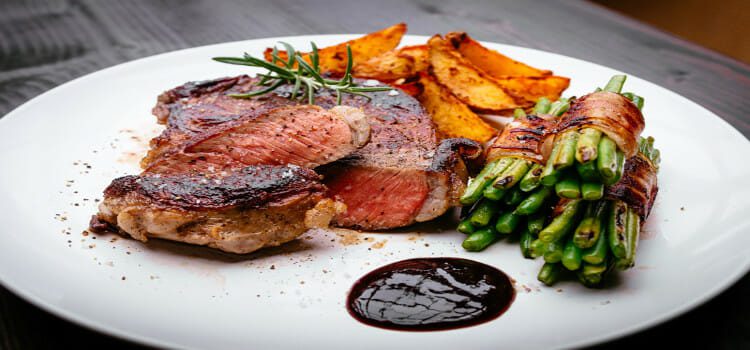
IIFYM: I know that you have a consulting business where you help top-level bodybuilding competitors get in shape for the stage. I have seen some of your clients and I have to say that I am very impressed. I know that you don’t follow an IIFYM approach to nutrition and contest prep, but I am sure our readers would still love to hear more about your philosophy.
BF: Well I like to build their metabolic capacity to start things off. All too often someone comes to me and they’ve been eating absolutely nothing and doing hours of cardio etc. I like to work with people longer than the norm “12 weeks” and really take the time to make sure they aren’t going into a show eating 800 cals etc and still burning no body fat.
So we start with that and when we get them up to a reasonable level we then will slowly add in some cardio and slowly take down their calories as they progress, but only if necessary. When you have enough time a person’s body will essentially get used to more calories and get leaner in the process, unfortunately a lot of coaches never give their clients a fighting chance and just cut everything out.
I always implement a cheat meal each week. Some people again don’t agree with that, but I think for what I do and the methods I use it does and has worked great for my clients. Post show I help them out of “prep” and help reverse diet them out of the show.
I also REALLY believe in the mental aspect of things. So with that I have a private team page all of my athletes can interact on and can encourage one another.
My team is more of a family and I don’t just take everyone on for the purpose of making a buck.
I want hard working people that are ready to work, but also good people that respect others and support others in their quest to betterment. My team members are all very unique but also at the root of things very much the same so it all works great.
I am never unavailable to clients and have a support system of assistants below me that they can also contact if at that very moment I am unavailable. Essentially when I take someone on, Its all-encompassing. I do everything I can to help them be successful on stage, but also in life.
IIFYM: Are there any clients that you are particularly proud of that you would like to mention? Anyone, that has beaten the odds or overcome an amazing struggle?
BF: I love all my clients. I will however name a few.
- Ashley Kurtenbach
- Kay Jordt
- Nikki Walter
- Tera Busker
With a large team its hard to name everyone, but these ladies have all pushed through many life events to gain success and become the strong ladies they are today.
As one of your Facebook friends I see your daily updates and I have to tell you man, I am impressed with how encouraging you are. You always bring a very humble, forgiving and positive sense of self to your followers while encouraging us to do the same.
IIFYM: Can you give our IIFYM readers some insight into your belief system? Maybe a few tools we can implement to move towards a more positive version of ourselves?
BF: I can’t just give one tip. I think a lot goes into this lifestyle and you have to have a lot of things in order to be successful.
You need to first of all be ok with yourself in whatever you are involved in, or what level you are at in everything you do “workout routine, diet, etc.” When you are ok with yourself and love yourself, you will make more of a commitment to the betterment of you. You also won’t get discouraged when things don’t go exactly how you want them to. You will have the strength to carry on and continue to try to achieve the results you are striving for.
If you don’t love yourself now and every step of the way, you definitely won’t be happy wherever it is you are going.
Everything takes time; it took time to put on the weight so it will take time to take it off. Set some realistic goals and then set a big goal at the end. Enjoy each incremental goal that you have achieved on the way to your big goal and celebrate those victories on the way to a better you.
If you are having a hard time with the plan you are on, take a step back and reevaluate what you are doing and make sure the plan is right for you. Make sure your diet and workout routine fits in accordance with your goals, diet being the most important.
If you’re not eating for results you will never have the success you want. Also change up your plan. Your body adjusts to workouts etc rather quickly, so if you are always doing the same stuff your body won’t make the changes you want it to.
Surround yourself with positive people and people that help you along the way. Negative people will just bring you down and make it that much harder for you to achieve your goals.
The people that bring you down are afraid of change, and feel that you’re positive attitude and hard work somehow makes them have to make those changes too, which scares people, so they will become your worst critics.
Rise above that and work on you, you are the best investment you can make. Also be open to advice. Ask questions and absorb what others pass on to you. However don’t make this information “truth” as many gurus out there believe they know it all and will pass on bad advice every chance they get. Do your homework and investigate the advice you are given and find which advice best works for you.
Use the resources you have and educate yourself, Bodybuilding.com being a major one. Make sure you are doing a routine that is right for you and you have a good diet plan in place too, nutrition is 80% of the equation. If that doesn’t work, consider hiring a trainer.
Don’t try to be just like someone else – that’s a recipe for failure. It’s ok to look up to, learn from, and be inspired by others, but don’t put yourself below them and assume they are better than you, be you and proud of your own accomplishments. The people you admire were once not so different than you. Blaze your own trail! You can accomplish anything you want with a strong mind, strong goals, and hard work. So if you want something, go get it.
IIFYM: How about sponsors? Are there any sponsors you would like to mention? Any companies you think our IIFYM readers should check out?
BF: All of my sponsors of course
Sponsors: /Nike/Bodybuilding.com /Beast Sports Nutrition/ P28 Bread/ Quest/MuscleEgg/Fat Gripz / MyOatmeal.com/Cyclone cups/Phit Hair and Body/ Fitmark bags/Tainted Industries/Cutandjacked.com

IIFYM: Now I’d like to move on to the part of the interview we call Rapid Fire IIFYM.
When you agreed to this interview, I asked the IIFYM facebook group for some questions they might have for you. Feel free to answer these with short answers:
When you agreed to this interview, I asked the IIFYM facebook group for some questions they might have for you. Feel free to answer these with short answers:
What does your shoulder routine consist of?
BF: Lol the shoulder questions…I get this one A LOT I like to train my shoulders with higher reps and LOTS of angles.
- Dumbbell Lateral Raises: 4 sets 15,15,12,10
- Smith Machine or seated db Shoulder Presses: 5 sets 15,12,10,10,10
- Standing straight curl bar side raises: 4 sets 15,15,15,15
- Dumbbell front Raises: 3 sets 15,12,10
- Barbell Shrugs: 5 sets 20,20,15,12,10
- Upright rows: 4 sets 15,12,12,10
- Seated rear delt machine, cables, or dumbbells: 4 sets 15,12,12,10
- Angled side raise with db to the side: 4 sets 12,12,12,10
Did you ever struggle with your weight?
BF: Of course…I don’t care who you are, nobody is perfect. I’ll tell you the first time you see yourself in photo-shoot or stage condition it’s hard to be anything less than that. When I was younger I was just happy being big, but now its hard to see myself sometimes anything less than stage ready.
In my off season when I add weight its one of the hardest things for me to do and see. Over time though I grow to accept how I look and when I fully accept it I know I’m ready to go at it again. I’ve fallen in that self-loathing and feeling terrible about myself and even bouts of body dysmorphia because I didn’t think I looked good, but even in off season I probably am leaner than 90% of the people at the gym.
Essentially if you don’t love yourself at EVERY step of the way, you’ll never love yourself where you are going and NEVER be happy. So that’s another reason for me taking time off. Letting myself KNOW I don’t need to be perfect.
What supplements do you believe in?
I wouldn’t be where I am at today without supplementing my diet. There are a lot of products on the market, and some great ones, but for myself I recommend Beast Sport Nutrition supplements, their entire line is GREAT!
They are also priced right and offer a lot of knowledge/science that backs up what they sell. If I were to recommend any other company for products Beast doesn’t offer, I would recommend looking at and reading the reviews on Bodybuilding.com and go through them for your nutritional needs. You can also purchase Beast products through Bodybuidling.com, so you get the best of both worlds.
- Beast Mode pre workout
- Creature pre workout
- Multi core with breakfast #1
- Omega 3 with breakfast and last meal #1, #6
- Glutamine post workout 5g
- 2 Shredded or Amphetalean both by Beast*when dieting* upon waking and mid-day #1, #4
- Beast Whey post workout- before bed #6
- Aminolytes by Beast Sports – intra workout and post
- L-Carnitine with breakfast and pre workout
- ALA with breakfast and lunch #1, # 3
- Vitamin D3 with breakfast #1
- Baby aspirin
- Mangnesium breakfast #1
- B complex breakfast #1
- Vitamin C breakfast #1
- Adrenal Support breakfast #1
I have tried pretty much EVERYTHING out there. I’m not about gimmicks and the promise of quick results. The supplements I take I believe to help me recover and give me that edge I need in training as hard as I do.
I have had great results with my supplement regimen and feel it works best for me. I think when you push yourself as hard as I do or any competitor for that matter having that extra boost that supplements offer keep you healthy, and help you recover to keep you moving forward.
We restrict our diets when we diet down, so making sure to fill those gaps, which that’s what supplements are meant for, NOT to take the place but to add to a nutrition plan, helps me to reach my goals while always striving for new ones.
How much cardio do you do when dieting?
BF: 20 mins on a stepper and then in the summer I like to walk outside, I do that almost every day.
BF: 20 mins on a stepper and then in the summer I like to walk outside, I do that almost every day.
HIIT or LISS?
BF: LISS
BF: LISS
When was the last time you ate fast food? What was it?
BF: I had two cheese roll-ups from Taco Bell after the LA expo…I think I cried a little bit. Sometimes the most simple of things are the best lol
BF: I had two cheese roll-ups from Taco Bell after the LA expo…I think I cried a little bit. Sometimes the most simple of things are the best lol
What is your ideal cheat meal?
BF: I don’t ever have cravings, but on season I normally stick to quest bars and peanut butter. Or I have a burger and sweet potato fries. I’m NOT a picky eater and love all food as long as I’m eating
BF: I don’t ever have cravings, but on season I normally stick to quest bars and peanut butter. Or I have a burger and sweet potato fries. I’m NOT a picky eater and love all food as long as I’m eating
How do you reflect haters negativity away from you?
BF: I don’t have any time for that… I basically feel if you surround yourself with good things, positivity, good people, etc it acts like a shield to repel negativity. I actually wrote an article on haters. There is too much of that going on. https://www.cutandjacked.com/Dealing-With-Haters-And-Negativity-On-Your-Quest-For-Success
BF: I don’t have any time for that… I basically feel if you surround yourself with good things, positivity, good people, etc it acts like a shield to repel negativity. I actually wrote an article on haters. There is too much of that going on. https://www.cutandjacked.com/Dealing-With-Haters-And-Negativity-On-Your-Quest-For-Success
Are you married?
BF: No but I will be June 28th of this year to my fiancé Amber Dawn Orton
BF: No but I will be June 28th of this year to my fiancé Amber Dawn Orton
Do you dehydrate for a show or do you increase water to flush water?
BF: I have done both, but find that having water in my system works FAR FAR better when done right. I also do the same for my clients.
BF: I have done both, but find that having water in my system works FAR FAR better when done right. I also do the same for my clients.
IIFYM: If there is anything you would like to tell the IIFYM community, now is the time!!
BF: I think you have a great site and a great attitude. I also think that having methods like IIFYM is a great way to get more people interested in health, nutrition, and fitness and am impressed with the knowledge that so many people display online or your site day to day.
BF: I think you have a great site and a great attitude. I also think that having methods like IIFYM is a great way to get more people interested in health, nutrition, and fitness and am impressed with the knowledge that so many people display online or your site day to day.
I also am a fan of a community that takes the time to help others and educate them, so to me you guys are doing it all right!
Originally posted 2019-01-28 04:39:06.


No comments:
Post a Comment